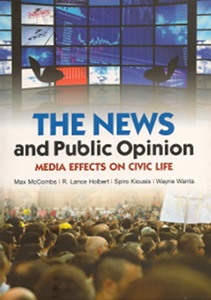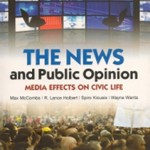Academics discuss political public relations
Posted by Elena del Valle on November 16, 2012
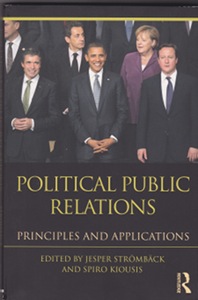
Political Public Relations book cover
Photos: Spiro Kiousis, Jesper Stromback
In Political Public Relations: Principles and Applications (Routledge, $49.95), a 338-page softcover book published in 2011 targeting an audience of students and practitioners with an interest in the developing field, fifteen men and three women, many of them in academia, discuss political public relations. The editors of the book, Spiro Kiousis, PhD*, and Jesper Stromback, PhD, believe that although political public relations plays an important role in society little theorizing or research takes place.
They participated in the book project to encourage integrative theory and research to connect public relations, political communication, political science and related fields. Stromback is Lubbe Nordström Professor and chair in Journalism, and professor in Media and Communication at Mid Sweden University, Sundsvall, Sweden. Kiousis is associate professor and chair of the Department of Public Relations, College of Journalism and Communications, University of Florida.
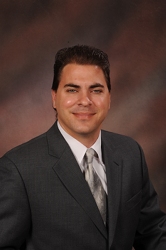
Spiro Kiousis, co-editor, Political Public Relations
“The recent presidential election campaign highlighted the ongoing importance of effective public relations and communication in winning an election. While the temptation to relegate traditional strategies and tactics as obsolete is high, the success of each candidate at different phases of the campaign rested on their ability to use both traditional channels (such as debates) or social media channels (such as YouTube), said Spiro Kiousis, co-editor, Political Public Relations by email.”
The book includes fifteen chapters. The first two chapters define political public relations and identify its roots. The next two are about news management, agenda indexing and building. The next chapters address political campaigning and presidential elections. The remaining chapters discuss corporate issues, political marketing, strategic framing, crisis communication, relationship management, government communication, digital issues, research and future issues as well as diplomacy, foreign relations and global political public relations.
“Oftentimes public relations in politics is misunderstood as being only about spin och news management, but at heart, political public relations is about organizations seeking to establish, build an maintain beneficial relationships and reputations with its key publics to help support its mission and achieve its goals. As such, public relations has always been an intrinsic part of politics and is key to long-term success both when campaigning and governing, and this book highlights both the principles and applications of public relations in politics,” said Stromback by email.

Jesper Stromback, co-editor, Political Public Relations
The book’s definition of political public relations is “the management process by which an organization or individual actor for political purposes, through purposeful communication and action, seeks to influence and to establish, build, and maintain beneficial relationships and reputations with its key publics to help support its mission and achieve its goals.” A book related website, political-public-relations.com, most recently updated September 2012 and run by the editors, extends the conversation beyond the book.
In addition to Kiousis and Stromback, the contributing authors are Paul Baines, PhD, W. Timothy Coombs, PhD, Mathew Eshbough-Soha, PhD, Guy J. Golan, Kirk Hallan, Robert Heath, PhD, Nigel Jackson, John A. Ledingham, PhD, Paul S. Lieber, Darren G. Lilleker, Diana Knott Martinelli, PhD, Juan Carlos Molleda, PhD, Karen Sanders, Kay Sweetser, PhD, John C. Tedesco, PhD, and Damion Waymer, PhD.
*Elena del Valle and Spiro Kiousis serve on the University of Florida Public Relations Advisory Council
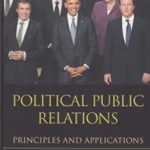
Click to buy Political Public Relations
